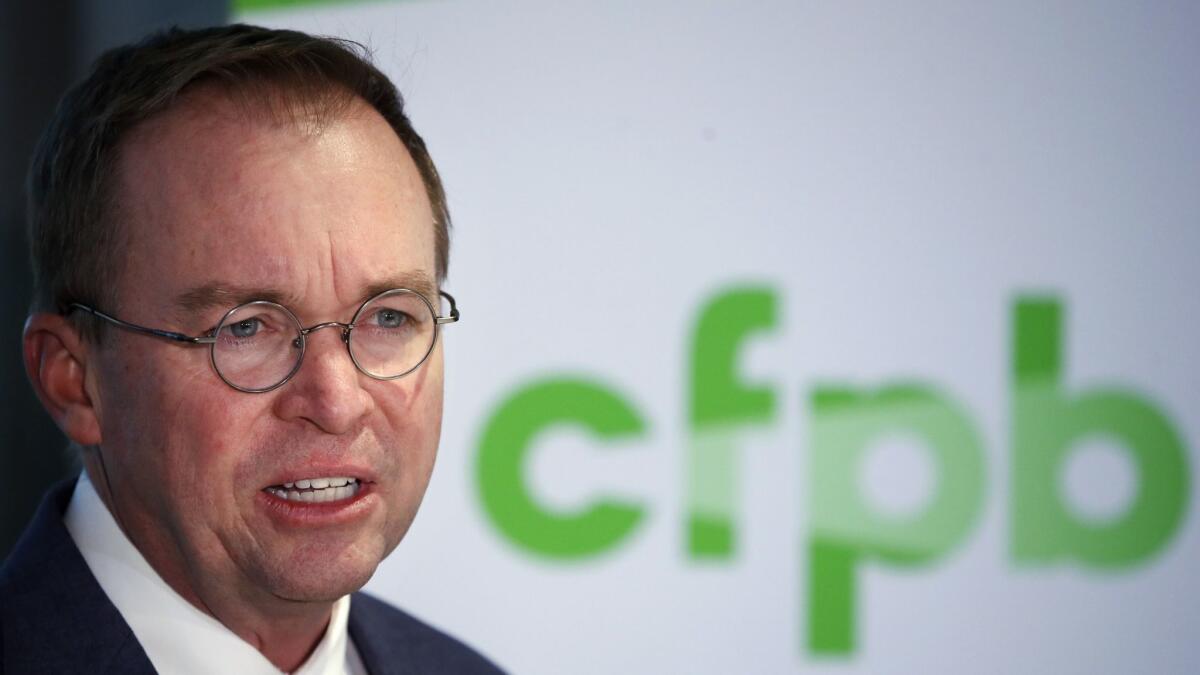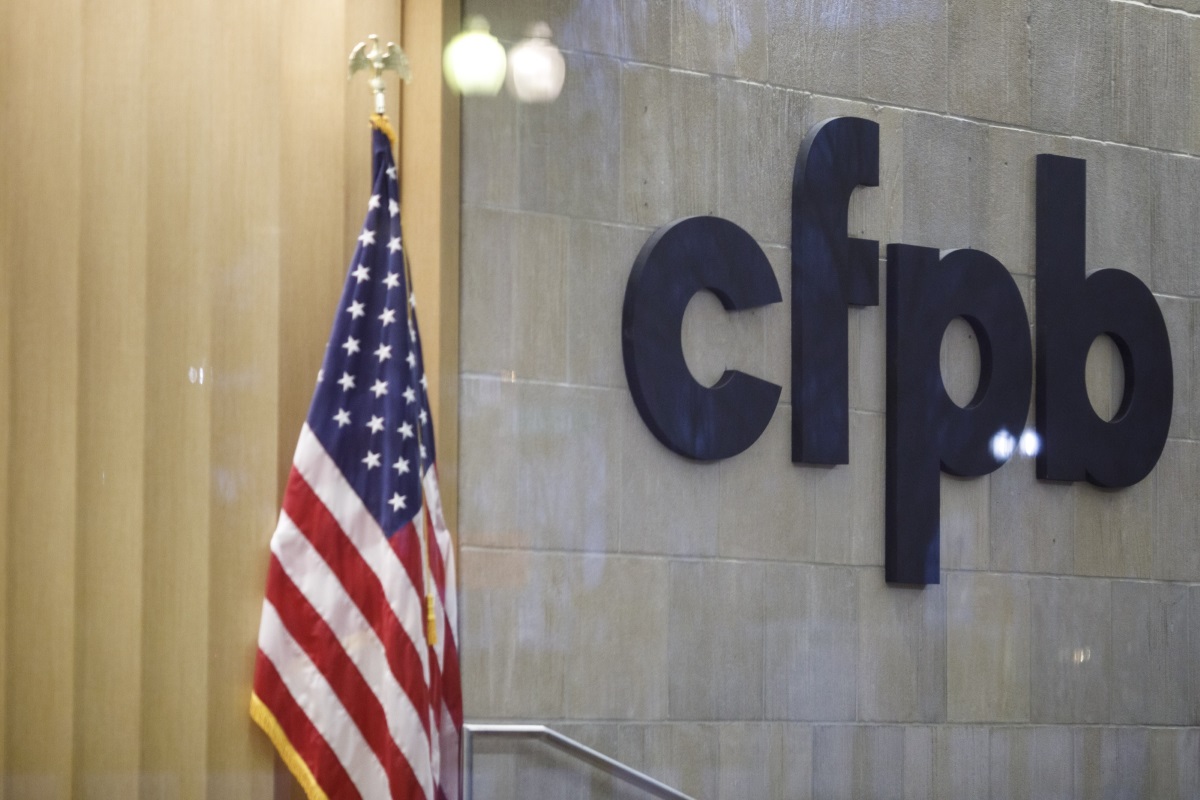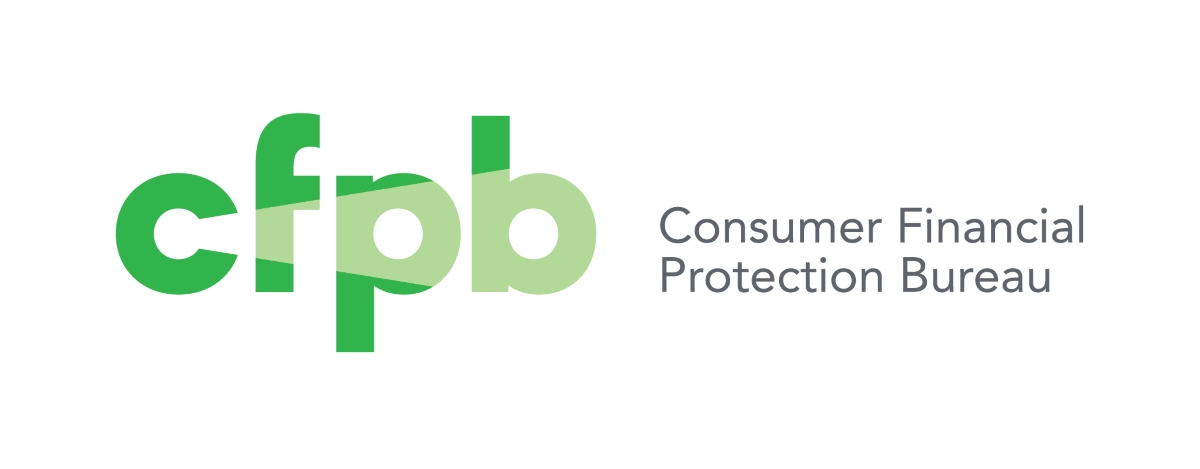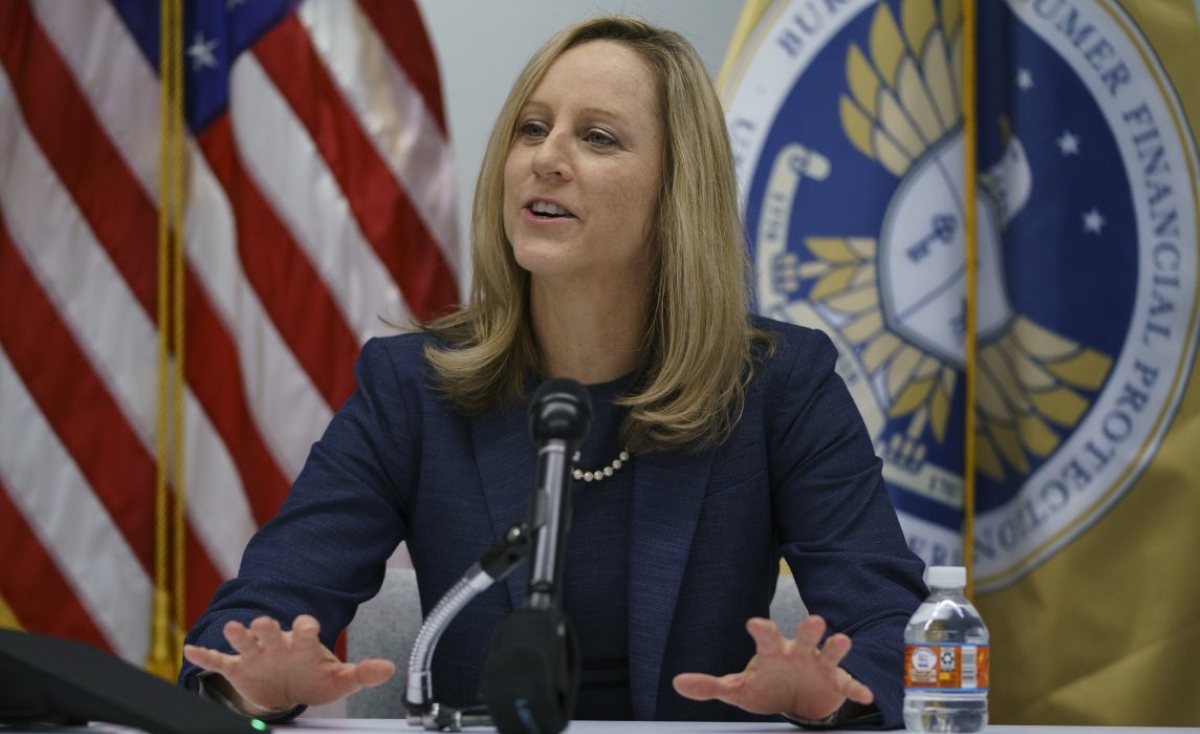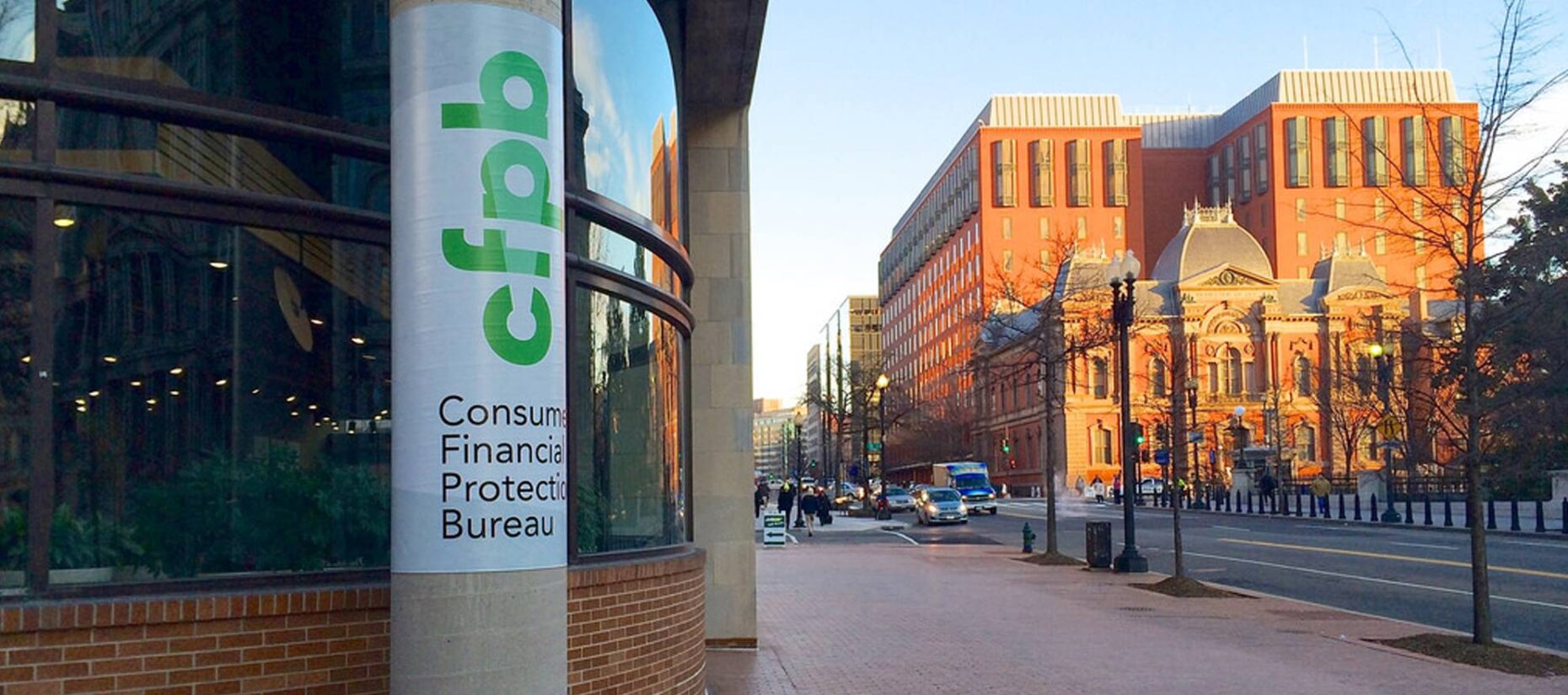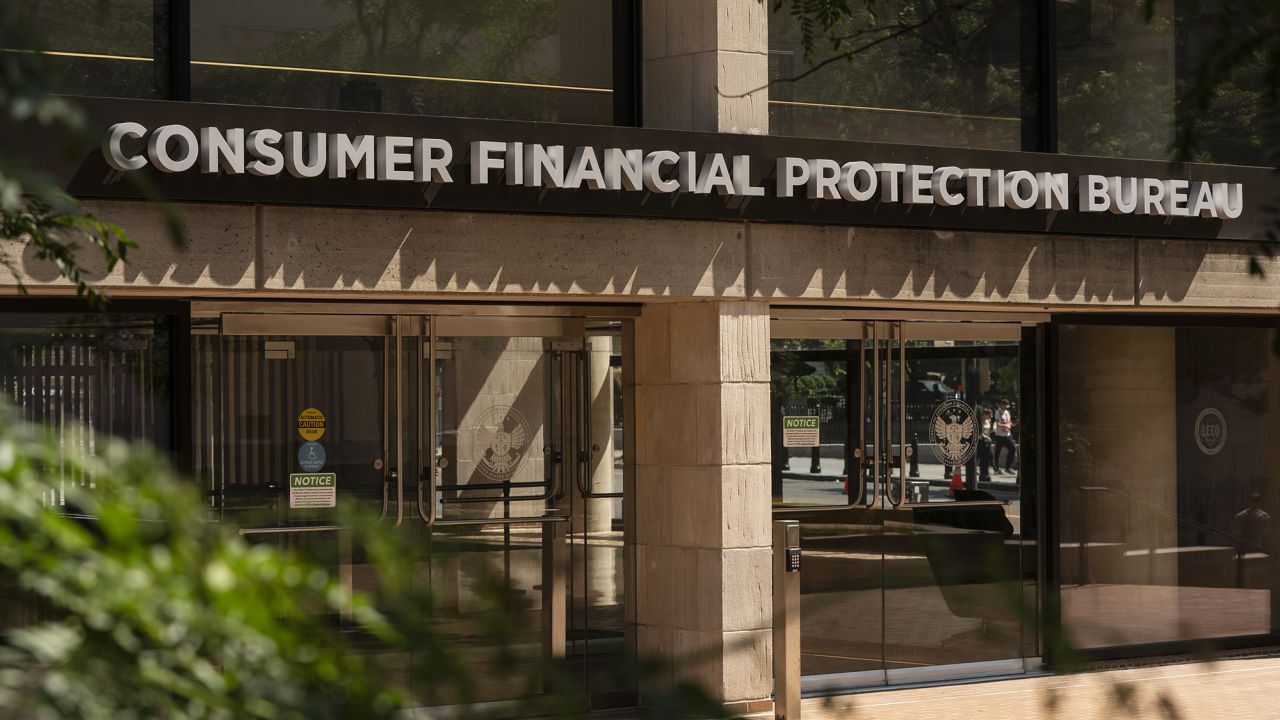

Finance
What Is The Consumer Finance Protection Bureau
Modified: March 1, 2024
Learn how the Consumer Finance Protection Bureau protects consumers in the world of finance. Understand the role and importance of this regulatory agency.
(Many of the links in this article redirect to a specific reviewed product. Your purchase of these products through affiliate links helps to generate commission for LiveWell, at no extra cost. Learn more)
Table of Contents
- Introduction
- History of the Consumer Financial Protection Bureau
- Purpose and Functions of the Consumer Financial Protection Bureau
- Regulatory Authorities of the Consumer Financial Protection Bureau
- Impact and Achievements of the Consumer Financial Protection Bureau
- Controversies and Criticisms of the Consumer Financial Protection Bureau
- Future Outlook and Potential Reforms of the Consumer Financial Protection Bureau
- Conclusion
Introduction
The Consumer Financial Protection Bureau (CFPB) is an independent agency of the United States government established in 2010 under the Dodd-Frank Wall Street Reform and Consumer Protection Act. Its primary mission is to protect and educate consumers in the financial marketplace, ensuring fairness and transparency in the financial products and services they use. The CFPB plays a crucial role in safeguarding consumers’ interests, promoting financial literacy, and enforcing laws that protect consumers from abusive and deceptive practices.
As a regulatory body, the CFPB holds significant power in the financial industry, with the authority to supervise and enforce regulations on a wide range of financial institutions, including banks, credit unions, mortgage lenders, payday lenders, debt collectors, and credit reporting agencies. Its aim is to create a level playing field for both consumers and financial institutions, fostering responsible lending practices and preventing harmful financial practices that can lead to consumer harm and economic instability.
The creation of the CFPB was a response to the 2008 financial crisis, which highlighted the need for consumer protection measures in the financial sector. Prior to its existence, oversight of consumer financial protection was scattered across various agencies, leading to regulatory gaps and inconsistencies. The CFPB was designed to be a central authority solely focused on consumer protection, consolidating and streamlining the regulatory framework.
Since its establishment, the CFPB has been at the forefront of consumer financial protection efforts, making notable strides in areas such as mortgage lending, credit cards, student loans, and payday lending. It has implemented and enforced regulations to ensure greater transparency and fairness in consumer financial transactions, resulting in tangible benefits for millions of Americans.
However, the CFPB has also faced criticism and controversy, with some arguing that it has overstepped its authority and imposed unnecessary burdens on financial institutions. There have been ongoing debates about the appropriate balance between consumer protection and industry innovation, with stakeholders advocating for reforms to address these concerns while maintaining the Bureau’s core mission.
In this article, we will delve into the history, purpose, functions, regulatory authorities, impact, controversies, and potential reforms of the Consumer Financial Protection Bureau. By exploring these dimensions, we can gain a comprehensive understanding of the CFPB’s role in protecting consumers and shaping the financial landscape in the United States.
History of the Consumer Financial Protection Bureau
The Consumer Financial Protection Bureau (CFPB) was established as part of the Dodd-Frank Wall Street Reform and Consumer Protection Act, signed into law by President Barack Obama in July 2010. The financial crisis of 2008 and its devastating impact on millions of American households served as the catalyst for the creation of the CFPB.
Prior to the CFPB, consumer financial protection was scattered across various government agencies, resulting in fragmented and inconsistent oversight. The lack of a central authority focused solely on consumer protection left consumers vulnerable to abusive practices in the financial industry.
The idea of a dedicated agency for consumer financial protection gained traction in the aftermath of the financial crisis, with the goal of addressing the regulatory gaps and ensuring a more robust system to safeguard consumers’ interests. The need for comprehensive reform led to the passage of the Dodd-Frank Act, which included the creation of the CFPB.
The CFPB officially began its operations on July 21, 2011, with Elizabeth Warren, a Harvard Law School professor and consumer advocate, serving as its interim director. Richard Cordray was later appointed as the first official director in January 2012.
From its inception, the CFPB has been committed to promoting fairness and transparency in the financial marketplace. It focuses on ensuring that consumers have access to clear and accurate information about financial products and services, and that they are protected from deceptive and abusive practices.
The CFPB has played a pivotal role in providing relief to consumers who have been victims of unfair or deceptive practices. It has pursued enforcement actions against numerous financial institutions, resulting in billions of dollars in restitution to consumers.
Throughout its history, the CFPB has undertaken various initiatives and programs to empower and educate consumers. It has developed tools and resources to promote financial literacy and provide consumers with the knowledge and skills to make informed financial decisions.
Over the years, the CFPB has faced challenges and changes in leadership and direction. In 2017, then-Acting Director Mick Mulvaney implemented reforms aimed at reducing the agency’s power and influence. However, subsequent directors have reaffirmed the CFPB’s commitment to its core mission and have taken steps to strengthen its enforcement efforts and regulatory oversight.
The CFPB continues to evolve and adapt to address emerging issues and protect consumers. Its history demonstrates an ongoing dedication to consumer financial rights and a commitment to promoting a fair and transparent financial marketplace for all Americans.
Purpose and Functions of the Consumer Financial Protection Bureau
The Consumer Financial Protection Bureau (CFPB) was created with the primary purpose of protecting consumers in the financial marketplace. It serves as a watchdog agency, ensuring that consumers are treated fairly and have access to clear and transparent information about financial products and services. The CFPB’s functions can be summarized into three main categories: regulation, supervision, and enforcement.
Regulation: The CFPB has the authority to issue and enforce regulations that govern the practices of financial institutions. These regulations aim to promote transparency, prevent fraudulent practices, and create a level playing field for both consumers and providers of financial products and services. The Bureau conducts extensive research and consumer testing to inform the development of these regulations, ensuring that they are effective and beneficial to consumers.
Supervision: The CFPB is responsible for supervising and examining a wide range of financial institutions, including banks, credit unions, mortgage lenders, and payday lenders, to ensure compliance with consumer protection laws. Through its supervisory activities, the Bureau identifies potential risks and issues, and works with institutions to rectify any violations or deficiencies. The CFPB’s supervision helps to maintain the integrity and stability of the financial system, safeguarding consumers from abusive and predatory practices.
Enforcement: The CFPB has the authority to enforce federal consumer financial laws and take action against institutions or individuals engaged in unfair, deceptive, or abusive practices. It has the power to investigate complaints, initiate legal proceedings, and impose penalties or seek redress for affected consumers. The Bureau’s enforcement actions aim to hold accountable those who violate consumer protection laws and serve as a deterrent to future misconduct.
In addition to its core functions, the CFPB also prioritizes consumer education and empowerment. It provides consumers with access to information, tools, and resources to make informed financial decisions. The Bureau develops educational materials, hosts webinars, and maintains an online database of consumer complaints, allowing individuals to learn about their rights and take action if they encounter unfair or deceptive practices.
Furthermore, the CFPB actively promotes financial literacy through educational initiatives targeting specific populations, such as students, service members, and older Americans. It collaborates with community organizations and stakeholders to deliver financial education programs and resources that empower individuals to achieve their financial goals.
In summary, the Consumer Financial Protection Bureau plays a vital role in protecting consumers and promoting fairness in the financial marketplace. Through its regulatory, supervisory, and enforcement functions, the CFPB strives to create a transparent and equitable environment where consumers can make well-informed decisions and trust that their financial rights are upheld.
Regulatory Authorities of the Consumer Financial Protection Bureau
The Consumer Financial Protection Bureau (CFPB) is granted extensive regulatory authority to oversee and enforce consumer protection laws in the financial sector. These authorities enable the CFPB to establish and implement regulations that promote transparency, fairness, and accountability in the marketplace. Here are some key regulatory authorities of the CFPB:
- Rulemaking: The CFPB has the power to issue rules and regulations that govern the practices of financial institutions. These rules cover various areas, including mortgage lending, credit cards, payday lending, debt collection, and more. The Bureau conducts thorough research and analysis to identify consumer issues and potential risks, and then develops rules to address these concerns. The CFPB’s rulemaking authority allows it to establish consistent standards and guidelines that financial institutions must follow, ensuring consumer protection is upheld.
- Consumer Financial Law Enforcement: The CFPB is empowered to enforce federal consumer financial laws, such as the Truth in Lending Act (TILA), the Fair Credit Reporting Act (FCRA), and the Equal Credit Opportunity Act (ECOA), among others. The Bureau has the authority to investigate and bring enforcement actions against financial institutions or individuals engaged in unfair, deceptive, or abusive practices. Through enforcement actions, the CFPB seeks penalties, restitution, and injunctive relief to address violations and protect consumers.
- Supervision and Examination: The CFPB has the authority to supervise and examine a wide range of financial institutions to ensure compliance with consumer protection laws. This includes banks, credit unions, mortgage lenders, and non-bank financial entities. Through its supervision and examination activities, the Bureau assesses the compliance systems, procedures, and practices of these institutions. It identifies potential risks, offers guidance for remedial actions, and holds institutions accountable for any violations or deficiencies found during examinations.
- Consumer Complaints: The CFPB operates a consumer complaints database that allows individuals to submit complaints about financial products or services. The Bureau uses these complaints to identify patterns of misconduct and potential areas for regulatory intervention. Consumer complaints provide valuable insights into the practices of financial institutions and help the CFPB prioritize its enforcement and supervisory efforts. Additionally, the CFPB assists consumers in resolving their complaints by working with the financial institutions involved.
- Preventative Measures: The CFPB has the authority to issue regulations and take proactive measures to prevent potential harms to consumers. This includes warning consumers about emerging risks, such as scams or predatory practices, and implementing safeguards to mitigate these risks. The Bureau also monitors and responds to changes in the financial marketplace, adapting its regulations and practices to address new challenges and protect consumer interests.
These regulatory authorities provide the CFPB with the tools necessary to effectively oversee the financial industry and protect consumers from unfair, deceptive, or abusive practices. By exercising its rulemaking, enforcement, supervision, and consumer complaint resolution powers, the CFPB plays a crucial role in promoting a fair and transparent financial marketplace that benefits consumers.
Impact and Achievements of the Consumer Financial Protection Bureau
Since its establishment, the Consumer Financial Protection Bureau (CFPB) has made significant strides in protecting consumers and promoting fairness in the financial marketplace. Through its actions and initiatives, the CFPB has achieved numerous successes that have had a tangible impact on the lives of millions of Americans.
1. Increased Financial Transparency: The CFPB has played a crucial role in promoting transparency in the financial industry. Through its rulemaking authority, the Bureau has implemented regulations such as the Credit Card Accountability Responsibility and Disclosure (CARD) Act and the Know Before You Owe mortgage disclosure rule. These regulations have enhanced consumers’ understanding of financial products and services, ensuring that they have access to clear and accurate information before making decisions.
2. Mortgage Market Reforms: The CFPB has focused on addressing issues in the mortgage market to prevent a repeat of the housing crisis. The Bureau has implemented rules that require lenders to assess borrowers’ ability to repay mortgages and have introduced measures to combat abusive practices such as predatory lending and robo-signing. These reforms have strengthened consumer protection and contributed to a more stable and responsible mortgage lending environment.
3. Enhanced Consumer Complaint Database: The CFPB operates a consumer complaints database, allowing individuals to report issues they have faced with financial products or services. This database has provided valuable insights into consumer experiences, identifying patterns of unfair or deceptive practices. The CFPB has used these insights to take enforcement actions against companies engaging in wrongful practices and to address systemic issues in the financial industry.
4. Enforcement Actions and Restitution: The CFPB has taken enforcement actions against financial institutions that have violated consumer protection laws, resulting in billions of dollars in restitution to affected consumers. These enforcement actions have not only provided redress to individuals harmed by unfair practices but have also served as a deterrent to future misconduct in the industry.
5. Empowering Financial Education: The CFPB has prioritized financial education initiatives to empower consumers and improve their financial literacy. The Bureau has developed tools, resources, and educational materials to help individuals navigate the complex financial landscape. Programs targeting specific populations, such as students and older Americans, have equipped them with the knowledge and skills needed to make informed financial decisions.
6. Student Loan Reforms: The CFPB has taken steps to address issues in the student loan industry. The Bureau has exposed predatory practices by student loan servicers and advocated for reforms to improve loan servicing, enhance borrower protections, and provide options for loan forgiveness or repayment assistance. These efforts have helped alleviate the burden of student loan debt for many borrowers.
7. Protection Against Abusive Financial Practices: The CFPB has taken action against abusive practices in the financial industry, such as predatory lending, deceptive marketing, and improper debt collection techniques. These actions have not only protected consumers from harmful practices but have also created a level playing field for financial institutions that operate responsibly.
The CFPB’s impact and achievements have contributed to a more transparent, accountable, and consumer-friendly financial marketplace. Through its regulations, enforcement actions, educational initiatives, and consumer complaint resolution, the CFPB has empowered individuals, prevented financial harm, and held institutions accountable for their actions.
Controversies and Criticisms of the Consumer Financial Protection Bureau
The Consumer Financial Protection Bureau (CFPB) has not been without its fair share of controversies and criticisms since its establishment. While many applaud the Bureau for its efforts to protect consumers and promote financial transparency, there have been several areas of concern that have sparked debates and garnered criticism from various stakeholders.
1. Lack of Accountability: One recurring criticism of the CFPB is its perceived lack of accountability. As an independent agency, the CFPB operates with a degree of autonomy and limited oversight. Critics argue that this independence grants the Bureau significant power without sufficient checks and balances, potentially leading to regulatory overreach and an absence of accountability to the American people.
2. Regulatory Burden on Small Businesses: Small businesses have voiced concerns about the regulatory burden imposed by the CFPB. Critics argue that the Bureau’s rules and regulations can be excessively complex and costly to implement, disproportionately affecting smaller financial institutions. They contend that this creates an uneven playing field, favoring larger institutions with more resources while hindering small businesses’ ability to compete.
3. Uncertainty and Regulatory Fluctuations: The shifting priorities and directions of the CFPB under different administrations have led to uncertainty in the financial industry. Critics argue that this unpredictability discourages innovation and investment, as businesses are reluctant to make long-term plans due to the potential for regulatory changes. Some argue for greater clarity and consistency in the Bureau’s approach to foster a more stable environment for financial institutions to operate in.
4. Litigation and Enforcement Actions: The CFPB’s enforcement actions and litigation strategies have also received criticism. Critics argue that the Bureau’s approach to enforcement can be overly aggressive, resulting in excessive penalties that may not always be commensurate with the violations. Some argue for a more balanced approach that takes into account the mitigating factors and the potential unintended consequences of harsh penalties on businesses and consumers alike.
5. Constitutional Concerns: The structure and independence of the CFPB have raised constitutional concerns. Critics argue that the Bureau’s single-director leadership and limited accountability to the executive or legislative branches of government infringe upon the separation of powers outlined in the U.S. Constitution. Some suggest reforms that would introduce a multi-member commission or provide additional checks and balances to ensure greater accountability and adherence to constitutional principles.
6. Consumer Access to Credit: Critics argue that some of the regulations implemented by the CFPB may unintentionally limit consumer access to credit. They contend that strict underwriting standards and increased compliance burdens on lenders may make it more difficult for certain individuals, particularly those with lower credit scores or limited credit history, to access loans and other financial products. Critics argue for a balanced approach that protects consumers while ensuring access to credit is not unnecessarily restricted.
These controversies and criticisms surrounding the CFPB reflect differing viewpoints on the appropriate balance between consumer protection, industry innovation, and regulatory oversight. While the Bureau’s mission to safeguard consumers is widely supported, ongoing debates and calls for reforms seek to address these concerns and find solutions that effectively protect consumers while promoting a healthy and competitive financial marketplace.
Future Outlook and Potential Reforms of the Consumer Financial Protection Bureau
The Consumer Financial Protection Bureau (CFPB) has been the subject of ongoing discussions regarding its future outlook and potential reforms. As the financial landscape continues to evolve and consumer needs change, there are several areas that stakeholders and policymakers are considering for improvement and enhancement of the Bureau’s operations.
1. Structural Reforms: One potential reform under consideration is altering the structure of the CFPB. Critics argue for transforming the Bureau into a multi-member commission, similar to other regulatory agencies, to ensure a broader range of perspectives and more balanced decision-making. This change could foster greater accountability, reduce the potential for regulatory overreach, and strengthen the legitimacy of the Bureau.
2. Clarifying and Streamlining Regulations: The CFPB could benefit from efforts to clarify and streamline its regulations. Critics argue that some of the rules and guidelines implemented by the Bureau may be overly complex, burdensome, or unclear, particularly for smaller financial institutions. Potential reforms could involve providing clearer guidance and simplifying regulations to ensure compliance is more achievable and cost-effective for all businesses.
3. Balancing Consumer Protection and Access to Credit: A key challenge for the CFPB is striking the right balance between consumer protection and access to credit. Reforms could focus on developing regulations that mitigate potential unintended consequences on consumers’ ability to access credit, particularly for individuals with limited credit history or lower credit scores. This may involve promoting responsible lending practices while ensuring that regulations do not unduly restrict credit availability.
4. Enhancing Coordination with Other Agencies: Collaboration and coordination between the CFPB and other regulatory agencies could be strengthened to create a more cohesive and efficient regulatory framework. By working closely with entities such as the Federal Reserve, the Office of the Comptroller of the Currency (OCC), and state regulatory bodies, the CFPB can better align its efforts and reduce potential regulatory overlap, fostering a more streamlined and effective approach to consumer financial protection.
5. Strengthening Consumer Education and Financial Literacy: To further empower consumers, the CFPB can focus on expanding its educational initiatives and resources. Reforms might involve increasing funding for financial education programs, targeting underserved communities, and collaborating with stakeholders to develop innovative tools and resources. Enhancing financial literacy can better equip consumers to make informed decisions and protect themselves from fraudulent or deceptive practices.
6. Consistency and Stability in Regulatory Direction: Achieving greater consistency and stability in the regulatory direction of the CFPB is another area of potential reform. Transparency in enforcement priorities and regulatory changes can help businesses plan and adapt to evolving consumer protection standards. Clear and predictable regulatory actions can provide the necessary guidance for financial institutions to comply with regulations effectively.
Overall, the future outlook of the CFPB involves considering potential reforms that address constitutional concerns, enhance accountability, balance consumer protection with access to credit, streamline regulations, and prioritize financial education. By acknowledging and adapting to the changing financial landscape, the CFPB can continue to evolve as an effective regulatory agency, ensuring a fair and transparent marketplace that benefits consumers and promotes financial well-being.
Conclusion
The Consumer Financial Protection Bureau (CFPB) has served as a vital guardian of consumer interests in the financial marketplace since its establishment. Through its regulatory, supervisory, and enforcement authorities, the CFPB has made significant strides in protecting consumers, promoting transparency, and fostering accountability in the financial industry.
Despite facing controversies and criticisms, the CFPB has achieved remarkable impact and accomplishments. It has increased financial transparency, implemented mortgage market reforms, provided restitution to affected consumers, empowered individuals through financial education, and taken action against abusive financial practices.
As the financial landscape continues to evolve, the CFPB faces ongoing challenges and potential reforms. Stakeholders and policymakers are exploring changes in the Bureau’s structure, clarifying and streamlining regulations, balancing consumer protection with access to credit, enhancing coordination with other agencies, strengthening financial education, and providing consistency and stability in regulatory direction.
The potential reforms being considered reflect the ongoing dialogue around finding the right balance between consumer protection, industry innovation, and regulatory oversight. It is crucial to strike a balance that safeguards consumer interests while enabling a fair and competitive financial marketplace.
In conclusion, the Consumer Financial Protection Bureau plays a critical role in protecting consumers, ensuring financial transparency, and promoting accountability. While criticisms and debates continue, the Bureau’s commitment to safeguarding consumer rights and promoting fairness in the financial industry is undeniably significant.
With continued efforts to address concerns, adapt to changes, and collaborate with stakeholders, the CFPB can continue to evolve and enhance its effectiveness in serving consumers. By striking the right balance between consumer protection and access to credit, empowering individuals with financial literacy, and promoting a stable and transparent financial marketplace, the CFPB can work towards its mission of fostering a resilient and equitable financial system for all Americans.



